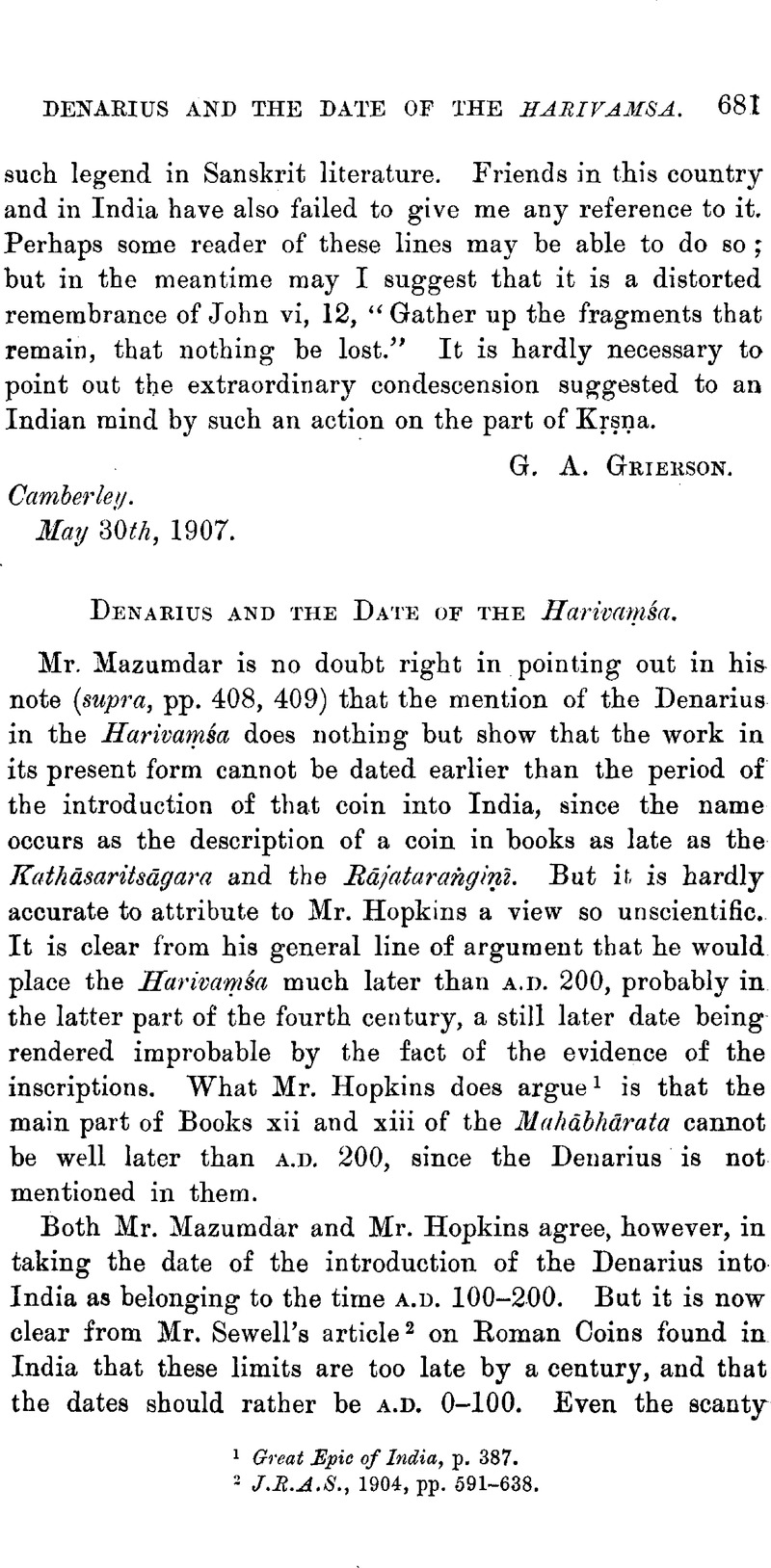Article contents
Denarius and the Date of the Harivaṃśa
Published online by Cambridge University Press: 15 March 2011
Abstract

- Type
- Miscellaneous Communications
- Information
- Copyright
- Copyright © The Royal Asiatic Society 1907
References
page 681 note 1 Great Epic of India, p. 387.Google Scholar
page 681 note 2 J.R.A.S., 1904, pp. 591–638.Google Scholar
page 682 note 1 The Provinces of the Roman Empire, ii, 300.Google Scholar Cf. Merivale, , History of the Romans under the Empire, viii, 352.Google Scholar
page 682 note 2 The visit of envoys to Augustus at Tarrago in B.C. 27 is only reported by Orosius, vi, 21, and is not usually accepted (Merivale, , iv, 118Google Scholar). But the visit at Samos in B.C. 19 is referred to by Dio, , liv, 9Google Scholar, and Strabo, , xv, i, p. 720,Google Scholar and is accepted by all modern authorities, e.g. Shuckburgh, , Augustus, p. 179.Google Scholar The Monumentum refers to several visits, c. 31, where see Mommsen's note. This must mean more than one petty embassy, as suggested in Duff, , Chronology of India, p. 19.Google Scholar
page 682 note 3 He tried to create a direct route between India and Egypt instead of viâ Arabia (Momrasen, , op. cit., ii, 290 seq.).Google Scholar
page 683 note 1 It was thence that Sarmanochegas came with the embassy to Augustus. Cf. Bombay Gazetteer, i, i, 536.Google Scholar
page 683 note 2 Cf. Sewell, , p. 596.Google Scholar The Homerites of Arabia modelled their coins on silver coins of Augustus, but on a Babylonian basis (Mommsen, , ii, 288).Google Scholar
- 1
- Cited by


